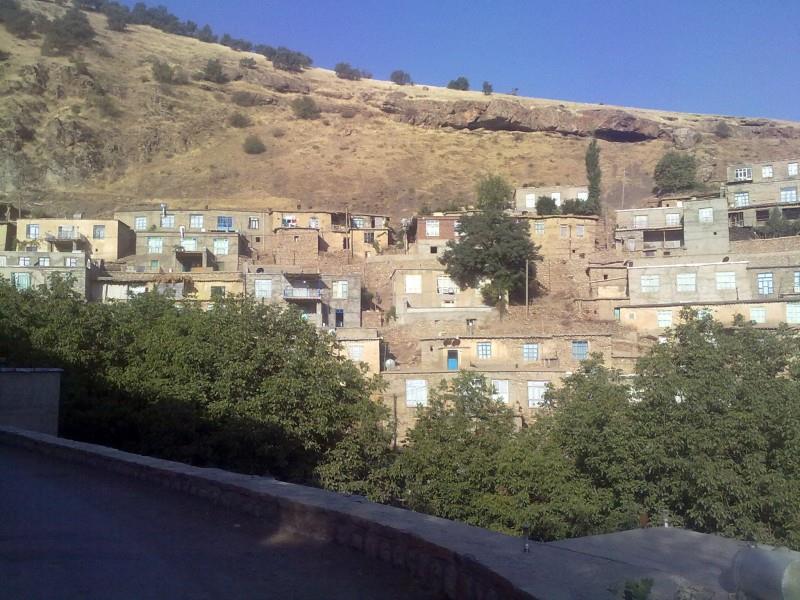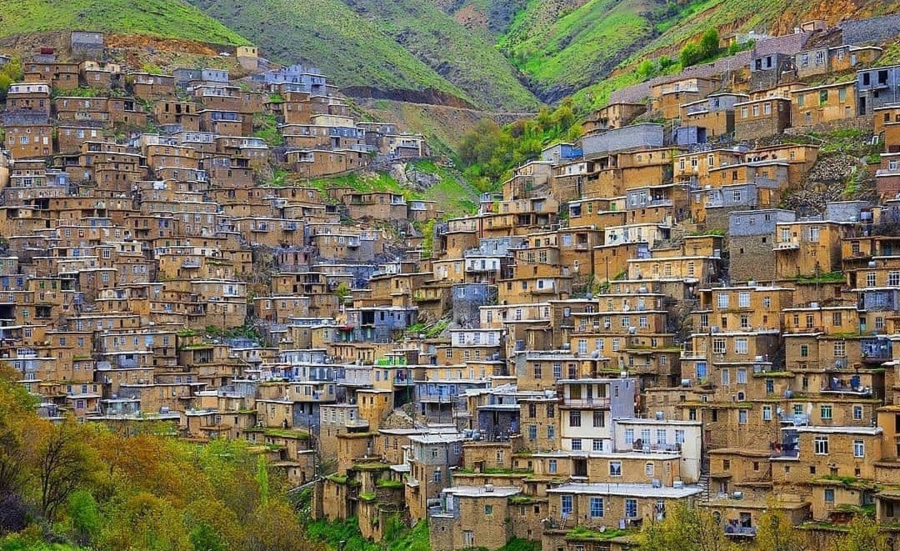Razaw is a stair-like village located on the down skirts of Kosalan Mountain across from Kormiana near Sawlawa (Salawat Abad) town and it is located 80 kilometers west of Sna city.
The historians believe that "Razaw" village used to be located over a hill across from "Karawa" which is now known as "Hezhi Fortress" 400 years ago. Later due to the roughness of that place and the invasion of lords to that village, Razaw people left that place and moved together to this place that is now known as Razaw.
When the people began to look for a place where they could live there safely, they found the current area which possesses a water source as well. The Razaw master went to the place of the water and modified it a little bit to change it into a spring. This spring is still running. The people chose the name "Hana Mala" for the spring at that time. The people of Razaw liked that place and began to build their homes there moving to the new area altogether.

Hawraman had not been divided during the rule of "Ali Mardan Sultan and Tahir Sultan" yet and at that time it was an independent area politically and economically, however, the enemies did not let this independence last long especially during the Qajar dynasty they attempted to force Hawraman lose its unity and solidarity. Farhad Mirza, Naser Alddin Shah's uncle, attacked Sna and later Hawraman in 1286 Hijri. After that attack, Hawraman lost its unity and independence; it was divided into four parts (Hawraman Takht, Lihon Hawraman, Dizli Hawraman, and Razaw Hawraman) each of which had their own lords who had conflicts and disagreements together at that time.

Razaw Hawraman included Slen, Blbar, Jiwar, Gawaro and Kameran.
Razaw was the capital of the Sultans and authorities of Hawraman. In order to protect their capital, these Sultans had prepared an army that mostly included the people of Razaw village.
There is a cemetery in Razaw where the tombstones of the Sultans, masters, and poets of Razaw are and according to the carvings of these tombstones, the history of this cemetery dates back to 250 years ago.
The last Sultan of Razaw was "Mozaffar Kahn", son of "Hussein Khan" who died recently.

Since Razaw was a place where Sultans and lords used to live, most of the population of this village was involved in military affairs and they guarded their village. The residents of this village had a better life compared to the other villages or ordinary people. They have also planted seeds and lentils in their lands. In the past few years, the people of Razaw began to plant trees in their lands and build gardens.
Razaw and Karawa villages are located on the Sna-Marivan Road so, many people travel via this road. The people of these two villages have used this opportunity to sell their products on the road. During Spring and Summer, the people of these two villages put their products on the road to sell them.
Due to its geographical location, Razaw has been chosen for carrying out several agricultural and poultry projects (especially aviculture). These projects have become a good source for the people of Razaw and other villages and even people of Marivan and Sna cities to earn money.









